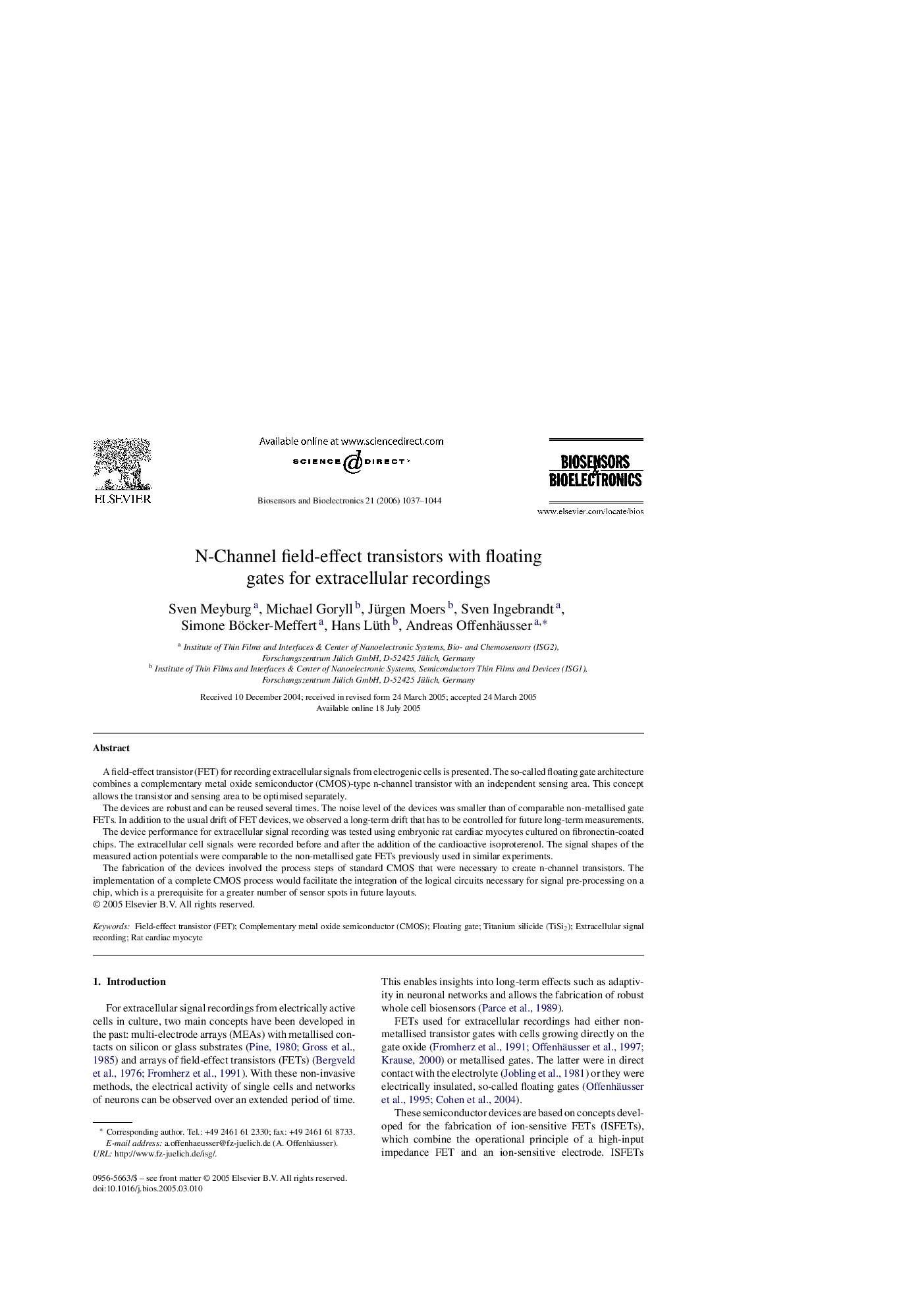| Article ID | Journal | Published Year | Pages | File Type |
|---|---|---|---|---|
| 870365 | Biosensors and Bioelectronics | 2006 | 8 Pages |
A field-effect transistor (FET) for recording extracellular signals from electrogenic cells is presented. The so-called floating gate architecture combines a complementary metal oxide semiconductor (CMOS)-type n-channel transistor with an independent sensing area. This concept allows the transistor and sensing area to be optimised separately.The devices are robust and can be reused several times. The noise level of the devices was smaller than of comparable non-metallised gate FETs. In addition to the usual drift of FET devices, we observed a long-term drift that has to be controlled for future long-term measurements.The device performance for extracellular signal recording was tested using embryonic rat cardiac myocytes cultured on fibronectin-coated chips. The extracellular cell signals were recorded before and after the addition of the cardioactive isoproterenol. The signal shapes of the measured action potentials were comparable to the non-metallised gate FETs previously used in similar experiments.The fabrication of the devices involved the process steps of standard CMOS that were necessary to create n-channel transistors. The implementation of a complete CMOS process would facilitate the integration of the logical circuits necessary for signal pre-processing on a chip, which is a prerequisite for a greater number of sensor spots in future layouts.
